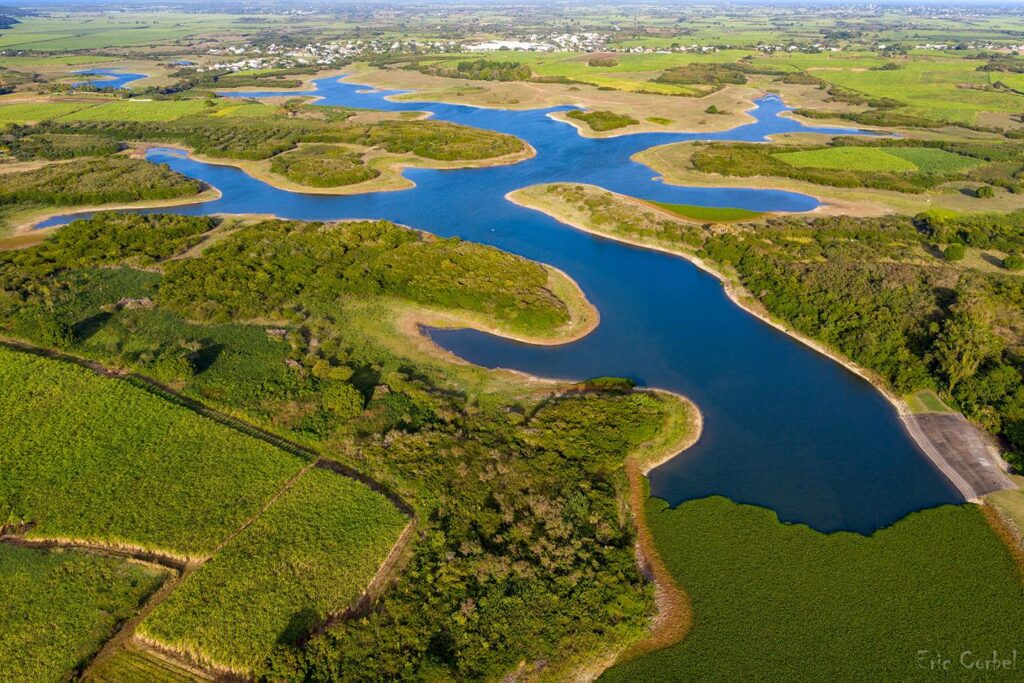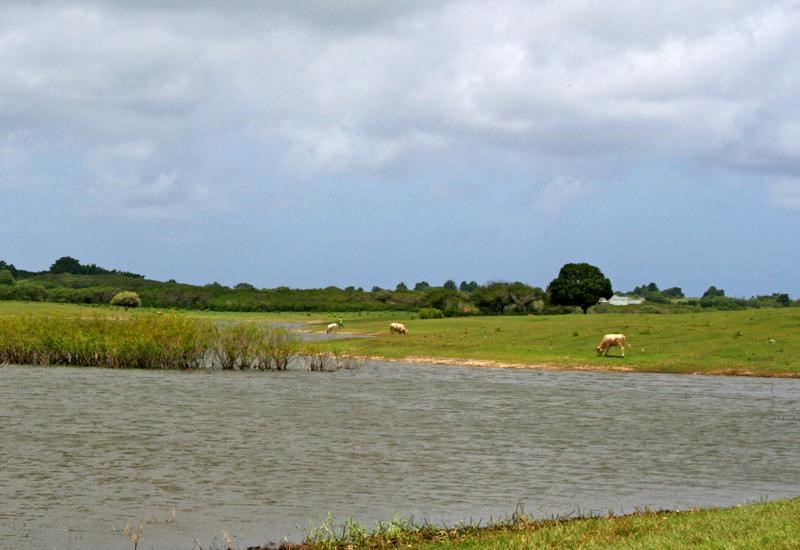
WATER TANK / GASCHET LAKE
Description
It is in the heart of Grande-Terre, between Port-Louis and Petit-Canal, that the largest body of freshwater in Guadeloupe is located. Built in the late 1980s to irrigate dryland agricultural land in the north of the island, this artificial dam is a biodiversity reserve. This therefore makes it the object of various protections: ZNIEFF* (Natural Areas of Ecological, Faunistic and Floristic Interest) since 2000 and ZICO* (Important area for the conservation of birds). With a height of 14 meters, this hydraulic dam is built on the “Ravine Gachet” river and retains a volume of water of 2,500 thousand m³ captured from the rivers and streams of Petit-Bourg. The dam that forms the reservoir, about 100 meters long, is located to the southwest of the lake. And, the hydroelectric plant installed in the place presents a maximum power of 250 KW.
Declared an area of ornithological interest, it is populated by numerous protected aquatic birds, some of which are in danger of extinction according to the IUCN (International Union for the Conservation of Nature). Therefore, it is more than ever a territory that must be preserved from human actions. But, in recent years, the use of model motor boats has caused obvious noise pollution, which poses a risk for nesting. On the other hand, hunting in protected areas is perpetuated and mongooses*, an invasive* and harmful specie, feed on eggs nested on the ground.
Biodiversity
Sanctuary for thousands of birds, aquatic and waders*, you can see species such as the common gallinule (Gallinula Galeata), American coot (Fulica americana), the pied-billed grebe (Podilymbus podiceps), the ruddy duck (Oxyura jamaicensis), etc., throughout the year. In addition to the species that breed there, this pool of water is home to groups of wintering ducks: Such a concentration of endangered ornithological species is not present in other parts of Guadeloupe. Other species are also seen regularly in this place such as the osprey (Pandion haliaetus), the peregrine falcon (Falco peregrinus), the merlin (Falco columbarius), the great egret (Ardea alba), the great blue heron (Ardea herodias) and many swallows (belonging to the family Hirundinidae (swallow).
Aquatic vegetation has difficulty establishing itself given the depth of the lake. Around it however, there are some bushes of sicklebush or bell mimosa (Dichrostachys cinerea)*, an invasive species. Farther from the water it is possible to find up to 20 species of rare or threatened spermatophytes or phanerogams (Spermatophyta)*, including species from the climate of semi-deciduous forest* on calcareous soil.
Ecotourim potential
Due to its inherited natural heritage, the Gaschet reservoir attracts ornithologists, scientists and botanists. Its design also allows picnic enthusiasts to take advantage of “carbets” (wooden shelters without walls typical of Native American cultures) for meals in cooler surroundings.
Not far away, a witness to the area’s “sugar” past, those who love walking can enjoy a more or less signposted path. During a guided tour, you can enjoy a mixed offer of bird watching, memory of the slave trade, discovery of a pond and walk along the edge of the Gachet ravine and its mangroves (riding a paddle boat).

Source: facebook.com Eric Corbel

Source: semag.fr

Source: guadeloupe-tourisme.com
Informations
-
-
Location
Guadeloupe (Port-Louis)
